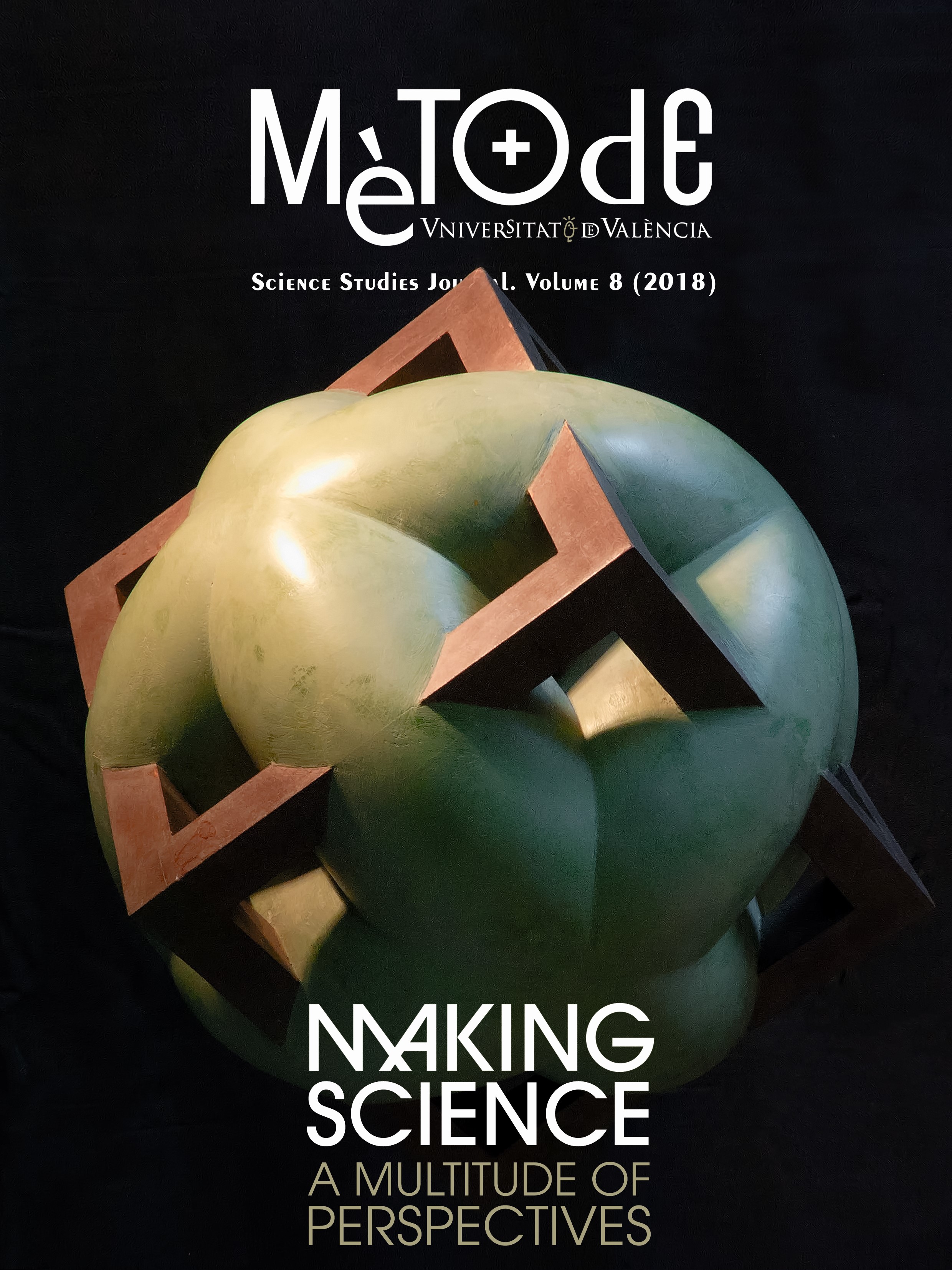La salida de África: Un escenario alternativo para la primera dispersión humana en Eurasia
DOI:
https://doi.org/10.7203/metode.8.10171Palabras clave:
salida de África, Dmanisi, Homo arcaico, felino de dientes de sable, Pleistoceno inferior, paleoclimatología Resumen
Resumen
Las pruebas paleoantropológicas halladas en el yacimiento del Pleistoceno temprano de Dmanisi (Georgia) han revelado que los primeros homininos que salieron de África eran más arcaicos que las poblaciones africanas y asiáticas coetáneas de Homo erectus. Existen evidencias que sugieren que estos homininos habitaban en los bosques más que en la sabana. Hace entre 1,8 y 1,6 millones de años una crisis climática provocó la expansión de la sabana y otras zonas áridas por gran parte de África. Como consecuencia, las primeras poblaciones de Homo se dividieron; algunas se adaptaron a las nuevas condiciones ecológicas y otras fueron siguiendo las zonas boscosas en recesión.
 Descargas
Descargas
 Citas
Citas
Agustí, J., & Antón, M. (2002). Mammoths, sabertooths, and hominids. New York: Columbia University Press.
Agustí, J., & Lordkipanidze, D. (2011). How «African» was the early human dispersal out of Africa? Quaternary Science Review, 30(11–12), 1338–1342. doi: 10.1016/j.quascirev.2010.04.012
Arribas, A., & Palmqvist, P. (1999). On the ecological connection between sabre-tooths and hominids: Faunal dispersal events in the Lower Pleistocene and a review of the evidence for the first human arrival in Europe. Journal of Archaeological Science, 26, 571–585. doi: 10.1006/jasc.1998.0346
Blumenschine, R. J. (1988). An experimental model of the timing of hominid and carnivore influence on archaeological bone assemblages. Journal of Archaeological Science, 15, 483–502. doi: 10.1016/0305-4403(88)90078-7
Blumenschine, R. J., & Marean, C. W. (1993). A carnivore’s view of archaeological bone assemblages. In J. Hudson (Ed.), From bones to behaviour: Ethnoarchaeological and experimental contributions to the interpretation of faunal remains (pp. 273–300). Carbondale: University of southern Illinois.
Carbonell, E., Mosquera, M., Rodríguez, X. P., Sala, R., & Van der Made, J. (1999). Out of Africa: The dispersal of the earliest technical systems reconsidered. Journal of Anthropological Archeology, 18(2), 119–136. doi: 10.1006/jaar.1998.0331
Dennell, R. (2009). The Palaeolithic settlement of Asia. Cambridge: Cambridge University Press.
Domínguez-Rodrigo, M. (2001). A study of carnivore competition in riparian and open habitats of modern savannas and its implications for hominid behavioral modelling. Journal of Human Evolution, 40, 77–98. doi: 10.1006/jhev.2000.0441
Horowitz, A. (1989). Continuous pollen diagrams for the last 3.5 m.y. from Israel: Vegetation, climate and correlation with the oxygen isotope record. Palaeogeography, Palaeoclimatology, Palaeoecology, 72, 63–78. doi: 10.1016/0031-0182(89)90132-6
Lordkipanidze, D., Jashashvili, T., Vekua, A., De León, M. S. P., Zollikofer, C. P. E., Rightmire, G. P., … Rook, L. (2007). Postcranial evidence from early Homo from Dmanisi, Georgia. Nature, 449, 305–310. doi: 10.1038/nature06134
Lordkipanidze, D., Ponce de León, M., Margvelashvili, A., Rak, Y., Rightmire, G. P., Vekua, A., & Zollikofer, C. P. E. (2013). A complete skull of early Homo from Dmanisi, Georgia, and its implications for the evolution and population biology of the genus Homo. Science, 342(6156), 326–331. doi: 10.1126/science.1238484
Marean, C. W. (1989). Sabertooth cats and their relevance for early hominid diet and evolution. Journal of Human Evolution, 18(6), 559–582. doi: 10.1016/0047-2484(89)90018-3
Marean, C. W., & Erhardt, C. L. (1995). Paleoanthropological and paleoecological implications of the taphonomy of a sabertooth’s den. Journal of Human Evolution, 29(6), 515–547. doi: 10.1006/jhev.1995.1074
Martínez-Navarro, B., & Palmqvist, P. (1995). Presence of the African Machairodont Megantereon whitei (Broom, 1937) (Felidae, Carnivora, Mammalia) in the Lower Pleistocene of Venta Micena (Orce, Granada, Spain), with some considerations on the origin, evolution and dispersal of the genus. Journal of Archaeological Science, 22, 569–582. doi: 10.1006/jasc.1994.0054
Shatilova, I., Mchedlishvil, N., Rukhadze, L., & Kvavadze, E. (2011). The history of the flora and vegetation of Georgia (South Caucasus). Tbilisi: Institute of Paleobiology. Georgian National Museum.
Tappen, M., Lordkipanidze, D., Bukshianidze, M., & Ferring, R. (2007). Are you in or out (of Africa?). In T. R. Pickering, K. Schick, & N. Toth (Eds.), Breathing life into fossils: Taphonomic studies in honor of C. K. Brain(pp. 119–135). Bloomington, IN: Stone Age Institute Press.
Tchernov, E. (1992). The Afro-Arabian component in the Levantine mammalian fauna: A short biogeographical review. Israel Journal of Zoology, 38, 155–192.
Vekua, A., Lordkipanidze, D., Rightmire, G.P., Agustí, J., Ferring, R., Maisuradze, G., Mouskhelishvili, A., … Zollikofer, C. (2002). A new skull of early Homo from Dmanisi, Georgia. Science, 297, 85–89. doi: 10.1126/science.1072953
Descargas
Publicado
Cómo citar
-
Resumen2205
-
PDF 964
Número
Sección
Licencia
![]()
Todos los documentos incluidos en OJS son de acceso libre y propiedad de sus autores.
Los autores que publican en esta revista están de acuerdo con los siguientes términos:
- Los autores conservan los derechos de autor y garantizan a Metode Science Studies Journal el derecho a la primera publicación del trabajo, licenciado bajo una licencia de Creative Commons Reconocimiento-NoComercial-SinObraDerivada 4.0 Internacional, que permite a otros compartir el trabajo con un reconocimiento de la autoría del trabajo y citando la publicación inicial en esta revista.
- Se permite y se anima a los autores a difundir sus trabajos electrónicamente a través de páginas personales e institucionales (repositorios institucionales, páginas web personales o perfiles a redes profesionales o académicas) una vez publicado el trabajo.





